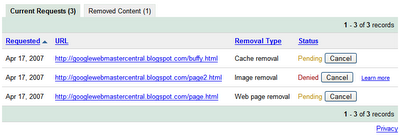

Many smaller teams can now avoid the purchase of massive resource for their basic and simple needs with the help of Microsoft Access.įurther, they do not need anyone to administer or monitor Access which regular client-server databases may require. Microsoft Access offers numerous advantages over database solutions over SQL Server and Oracle, where the need for a database is not very high. Hence, it is ideal for individual users and smaller teams who do not require larger and complicated databases for an extra price.

Microsoft Access is a simple desktop application that does not require any specific hardware or license to function.
Allows users to Report View Eliminates Extra Reports. Allows developers to create custom solutions using VBA code. 
A user-friendly feature ‘Tell Me’ for assistance.Allows building and publishing Web databases effortlessly.Ready templates for regular users to create and publish data.Import and export to other Microsoft Office and other applications.Easier than a client-server database to understand and use.Ideal for individual users and smaller teams.TEXT and String Functions in Excel (26+).Lookup and Reference Functions in Excel (36+).
 Effective Presentation Using Powerpoint. You can also use the course to prepare for the Microsoft Office Specialist (MOS) Certification exam for Microsoft Access 2016. This course is designed for people who wish to establish a foundational understanding of Microsoft Office Access 2016, including the skills necessary to create a new database, construct data tables, design forms and reports, and create queries. These first steps will enable you to perform queries on a database and create reports. In this basic course you will learn how you to create databases, to understand relationships between databases and how to establish them. Maybe you already tried and found out that especially the first steps can be complicated. Using Access is a wise decision when you have to manage a lot of data. In this course, you will use Access 2016 to manage your data, including creating a new database constructing tables designing forms and reports and creating queries to join, filter, and sort data. You can use it as a personal data management tool (for your use alone), or you can use it as a construction set to develop applications for an entire department or organization. A relational database application such as Microsoft Office Access 2016 can help you and your organization collect and manage large amounts of data.
Effective Presentation Using Powerpoint. You can also use the course to prepare for the Microsoft Office Specialist (MOS) Certification exam for Microsoft Access 2016. This course is designed for people who wish to establish a foundational understanding of Microsoft Office Access 2016, including the skills necessary to create a new database, construct data tables, design forms and reports, and create queries. These first steps will enable you to perform queries on a database and create reports. In this basic course you will learn how you to create databases, to understand relationships between databases and how to establish them. Maybe you already tried and found out that especially the first steps can be complicated. Using Access is a wise decision when you have to manage a lot of data. In this course, you will use Access 2016 to manage your data, including creating a new database constructing tables designing forms and reports and creating queries to join, filter, and sort data. You can use it as a personal data management tool (for your use alone), or you can use it as a construction set to develop applications for an entire department or organization. A relational database application such as Microsoft Office Access 2016 can help you and your organization collect and manage large amounts of data.








 0 kommentar(er)
0 kommentar(er)
